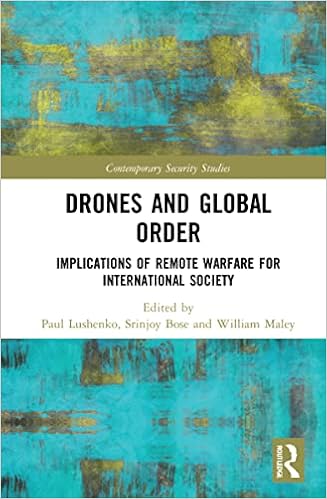Lieutenant Colonel Paul Lushenko, U.S. Army and Cornell University, mentioned that drones can be used to breech and protect national sovereignty. He nominated the General Atomics Reaper drone as the preeminent system. I suggest it is worth pointing out that the usefulness of this aircraft is reflected in its general design being widely copied by both allies and enemies.
Cecilia Jacob, Associate Professor, ANU International Relations, pointed out the dilemma that drones have been useful in response to conflicts short of war. However, the low cost of drones, and low risk for operators, may make war more likely. A positive point mentioned was using a drone to capture evidence for war crimes trials.
Emeritus Professor William Maley, ANU Diplomacy, reminded the audience that drones are not new, with the German V-1, being mass produced in 1944. As the Professor points out, the V-1 was not accurate enough, and the war did not continue long enough for its significance to be appreciated. Drones could be used for surveillance, material delivery, conventional military attack, attack on terrorist leadership, and drone swarms. On the last point I coached a team of Australian Navy, government and industry people working on swarm defence. Media reports suggest Ukraine used drones to distract the defenders of a Russian warship.
Professor Maley commented that "Most people think of drones for delivering pizza, not bombs". This made me wonder what will be the effect of low cost mass-produced drones. Will this be like the effect smart anti-tank weapons have had in the Ukraine? What if both sides are supplied with thousands of small, disposable armed drones, which can loiter over a battlefield? I suggest a drone packaged in a disposable larch tube similar in size and operation to an anti-tank missile would prove a popular product. This would be larger than the AeroVironment Switchblade, with a battery motor for loitering, and a rocket motor for attack.

No comments:
Post a Comment